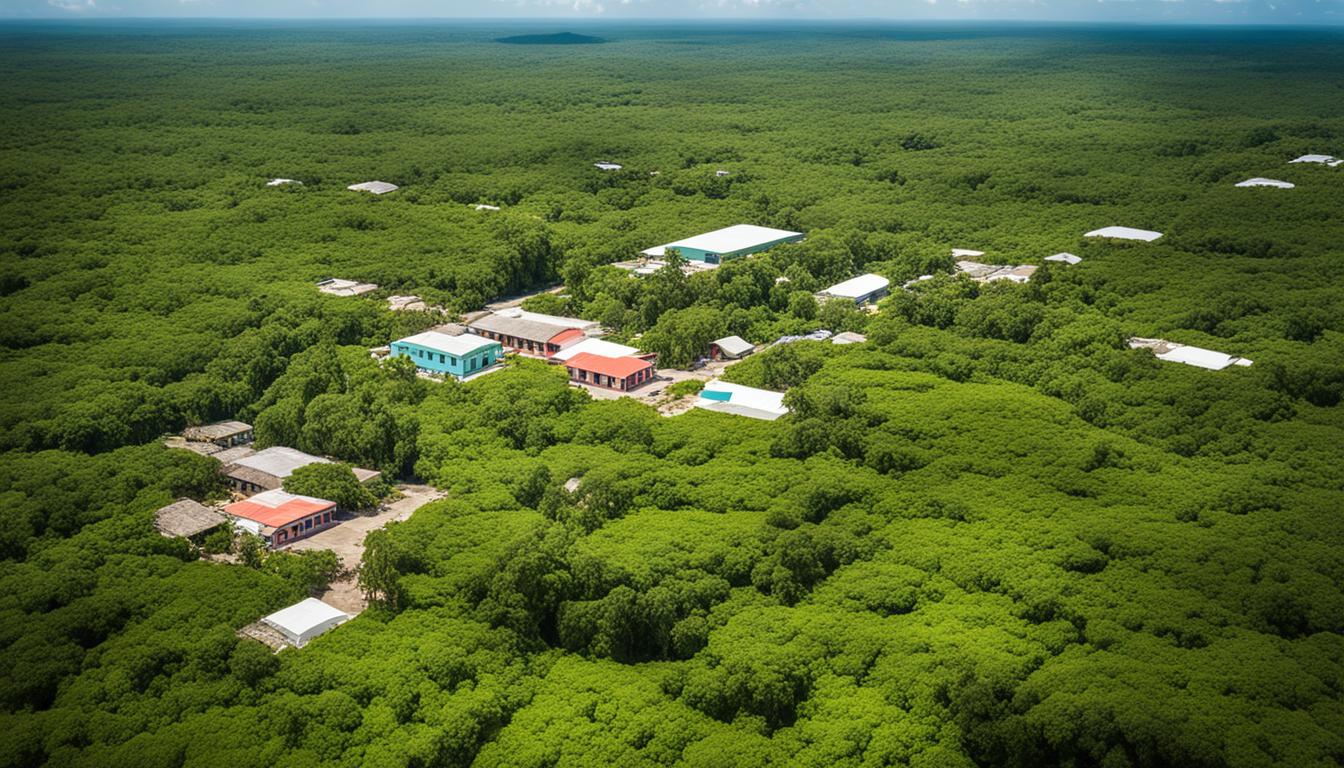How Tree Sensors Are Being Used Around the World
How Tree Sensors Are Being Used Around the World
Trees are essential to urban and natural ecosystems, offering a wide range of benefits, from purifying air and sequestering carbon dioxide to providing shade and enhancing biodiversity. However, maintaining the health of trees in cities and forests is an ongoing challenge for environmental scientists, city planners, and foresters.
Recent technological advancements, particularly in the field of the Internet of Nature (IoN), have led to the development of “tree sensors.” These sensors are revolutionising the way we monitor and care for trees, providing real-time data that helps to ensure their health and longevity. This article explores how tree sensors are being used around the world, the technology behind them, and the impact they are having on tree management and urban forestry.
What Are Tree Sensors?
Tree sensors are IoT devices designed to monitor the physiological and environmental conditions of trees. They measure various parameters such as soil moisture, sap flow, temperature, humidity, and even the electrical signals emitted by trees. These sensors transmit data wirelessly to a central system, where it is analysed to assess the health and well-being of the trees. This real-time data allows for immediate interventions when trees are under stress due to drought, pests, diseases, or other environmental conditions.
Global Applications of Tree Sensors
Tree sensors are increasingly being used in urban and rural environments around the globe. Below are some key examples of how these sensors are being utilised:
1. Smart Forests in the United States
The United States has been at the forefront of implementing tree sensors to manage urban forests. In New York City, for instance, the NYC Parks Department has deployed sensors as part of the “TreeKIT” initiative to monitor the health of thousands of trees across the city’s parks and streets. These sensors provide data on soil moisture and environmental conditions, which helps in optimising watering schedules and detecting early signs of disease or pest infestation. Similar efforts are being seen in cities like San Francisco and Boston, where tree sensors help maintain tree health in increasingly variable climates.
- NYC Parks Department: TreeKIT Initiative

2. Urban Tree Monitoring in Singapore
Singapore, known for its “City in a Garden” concept, has also adopted tree sensor technology to monitor its vast urban greenery. The National Parks Board of Singapore (NParks) uses sensors to measure sap flow, a critical indicator of tree health. The data collected is integrated into a larger “smart city” framework, providing insights into how trees interact with their urban environment. The technology helps Singapore manage its urban heat island effect and enhances its urban resilience against climate change.
- National Parks Board, Singapore: Tree Health Management
3. Drought Management in Australia
In Australia, where drought conditions are becoming more frequent and severe, tree sensors are helping to manage water use efficiently. Melbourne, for example, uses soil moisture sensors to determine the optimal times for watering city trees, conserving water while maintaining tree health. These sensors also help detect trees that are under stress due to insufficient water, allowing for targeted interventions. The sensors provide data on soil salinity levels, helping to identify areas where trees may be at risk of salt damage, a common issue in coastal areas.
- Melbourne Water: Water Conservation Strategies
4. Wildfire Prevention in Spain
In Spain, tree sensors are being used in innovative ways to prevent wildfires. By monitoring the moisture content in trees and surrounding vegetation, sensors can detect early warning signs of drought conditions that may lead to fires. This data is then relayed to local authorities and forest managers, who can take preemptive measures, such as controlled burns or strategic water distribution, to reduce the risk of wildfires.
5. Preserving Rainforests in the Amazon
The Amazon Rainforest, often referred to as the “lungs of the Earth,” faces deforestation and degradation due to logging, mining, and agricultural expansion. In Brazil, tree sensors are being used to monitor the health of the rainforest. Sensors placed in trees measure sap flow, trunk growth, and atmospheric conditions, providing real-time data on the forest’s health. This data is used by environmental organizations and government agencies to develop strategies for preserving these vital ecosystems.

6. European Smart Cities Initiatives
Several European cities, including Amsterdam, Berlin, and Copenhagen, are incorporating tree sensors into broader “smart city” initiatives. These sensors monitor the health of trees and provide data that informs urban planning decisions. For instance, the city of Amsterdam uses sensors to monitor the growth rate and overall health of trees to plan new green spaces and ensure that existing trees are well-maintained. This integration into smart city infrastructure helps cities balance urban development with environmental sustainability.
The Role of Dr. Nadina Galle
Dr. Nadina Galle, author, ecological engineer and creator of the “Internet of Nature” movement, has been at the forefront of advocating for the use of technology in urban forestry. She argues that technology, like tree sensors, can help cities become more resilient to climate change by providing precise data on the health and growth of urban trees. In her research, Dr. Galle has explored how cities worldwide can leverage tree sensors and other IoT devices to create data-driven urban green spaces that are healthier, more sustainable, and better integrated with human activities.
In an article titled “Trees Can Talk: Are We Listening” published on her website, Dr. Galle emphasises the importance of using real-time data to make informed decisions about urban forest management. She highlights examples from cities like Amsterdam, where sensors are used to create digital twins of trees that help urban planners visualise and manage green spaces more effectively.
Check out more about Dr. Galle’s book on her website.

Benefits of Using Tree Sensors
The use of tree sensors offers several benefits:
- Real-time Monitoring: Sensors provide continuous, real-time data, allowing for immediate responses to environmental stressors.
- Water Conservation: By monitoring soil moisture levels, cities can optimise watering schedules, reducing water waste.
- Early Disease Detection: Sensors can detect early signs of disease or pest infestation, allowing for prompt treatment.
- Climate Resilience: Data from sensors can help cities understand how trees contribute to cooling and air quality, guiding urban planning efforts.
- Wildfire Prevention: In regions prone to wildfires, sensors provide critical data on moisture levels, helping to prevent fires before they start.
Challenges and Future Directions
While the benefits of tree sensors are numerous, there are also challenges to their widespread adoption. These include the high cost of deployment, the need for continuous maintenance, and data privacy concerns. Additionally, there is a need for standardised protocols for sensor data collection and analysis to ensure that the data can be effectively integrated into urban planning processes.
Looking ahead, the future of tree sensors looks promising. As technology becomes more affordable and accessible, it is likely that more cities and rural areas will adopt these devices. Integration with other smart city technologies, such as AI and machine learning, could enhance the predictive capabilities of these sensors, leading to even more effective tree management strategies.
Conclusion
Tree sensors represent a significant advancement in how we care for and manage trees in both urban and rural environments. From conserving water in drought-prone areas to preventing wildfires and maintaining urban greenery, these sensors provide a wealth of data that can help cities and organisations make informed decisions. As highlighted, by experts like Dr. Nadina Galle, the integration of technology into environmental management is not just a trend but a necessary step towards building resilient and sustainable cities of the future.
References
- Dr. Nadina Galle – Trees Can Talk: Are We Listening“
- National Parks Board, Singapore – Tree Health Management
- NYC Parks Department – TreeKIT Initiative
- Melbourne Water – Water Conservation Strategies
- European Commission – Smart Cities Initiatives
Other Author Podcasts You Might Enjoy
Tune into Alexandra Steed, the ground-breaking author, as she speaks to Jackie De Burca in a series of four podcasts that explore her book, Portrait to Landscape, in depth. You will learn about so many fascinating things when it comes to nature, humans, our landscapes, climate change, biodiversity and how we can tip the balance to live in a more beautiful, nature-positive world.
Be sure to enter the book giveaway below. Alexandra Steed has generously agreed to offer ten copies of her excellent book. Click on the link below:
https://kingsumo.com/g/1v9qy6m/book-giveaway-portrait-to-landscape-a-landscape-strategy-to-reframe-our-future-by-alexandra-steed








Under Ambitious Forest City Blueprint Lies a Stark Reality
6 months ago[…] and sustainable cities at Trinity College Dublin, Ireland. Passionate about data analysis, smart cities, and media communication, Yuyang aims to drive societal progress through technology […]